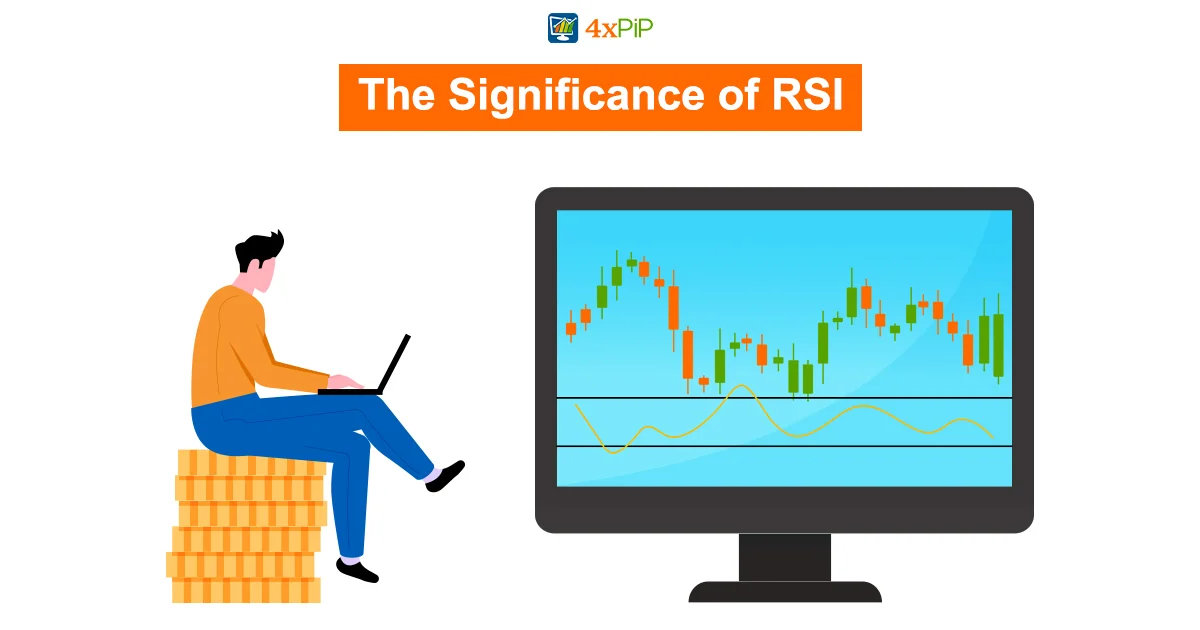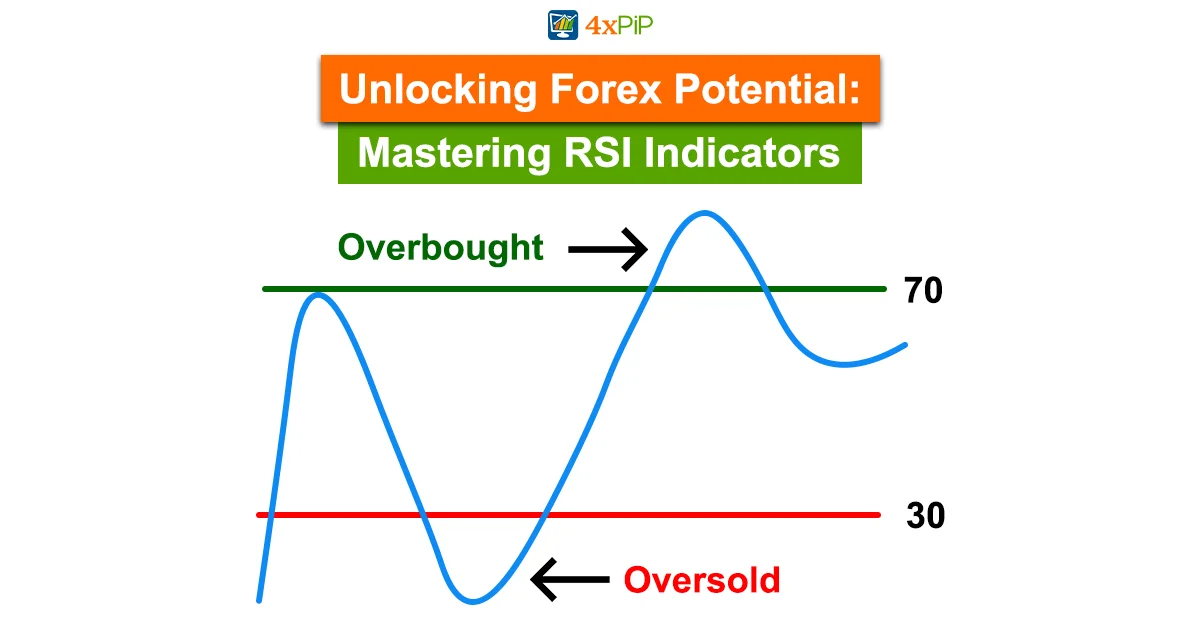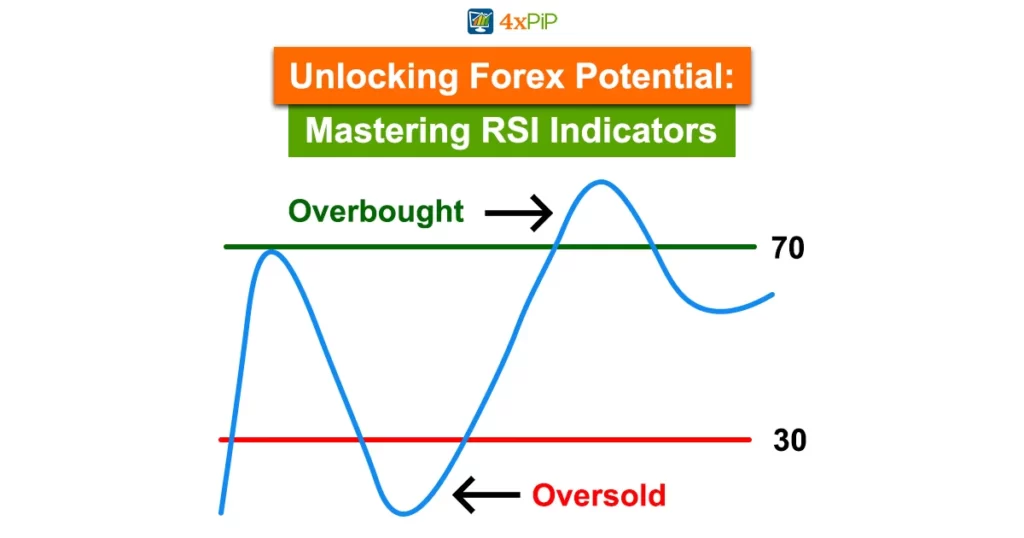Hi there! This is a helpful guide by 4xPip about using the Relative Strength Index (RSI) in forex trading. If you’re new to trading and want to improve your strategies, it’s important to grasp how RSI works. If you need expert advice, you can reach out to 4xPip at [email protected].
The Significance of RSI:

RSI is an important tool in trading. It shows when a stock is likely to be too high (RSI above 70) or too low (RSI below 30). 4xPip suggests paying attention to extreme readings like 80 and 20. RSI can give false signals in fast markets, so it’s good to use it with other indicators for better results.
Trading with RSI: Practical Steps:
Implement an intraday forex trading strategy with RSI using these practical steps from 4xPip:
Monitor RSI Readings: Watch for overbought or oversold conditions.
Confirming Indicators: Use momentum or trend indicators for confirmation.
Initiating the Trade: Look for divergence signals or changes in ADX direction. Enter the trade with a well-placed stop-loss order and target the nearest support/resistance.
Calculating RSI for Precision:
Knowing how to calculate RSI is important for accuracy. Pick a timeframe, add up your gains, divide by losses, and you get the RSI value. 4xPip suggests traders check this calculation for smarter decisions.
Deciphering RSI Values:
If the RSI is below 30, it’s a sign to buy. If it’s above 70, it’s a signal to sell. The ideal RSI varies based on your specific trading goals.
Beyond RSI: Better Indicators:
RSI is good, but it’s not great at spotting trends. 4xPip recommends using other indicators like Moving Average Convergence Divergence (MACD) along with RSI for a better trading plan.
Conclusion:
Understanding RSI is crucial for traders. 4xPip suggests using this knowledge and staying aware of market conditions. Don’t overlook its full potential—reach out to 4xPip’s experts at [email protected] for help and check out their trading tools and robots. Begin your path to successful trading with 4xPip today.












